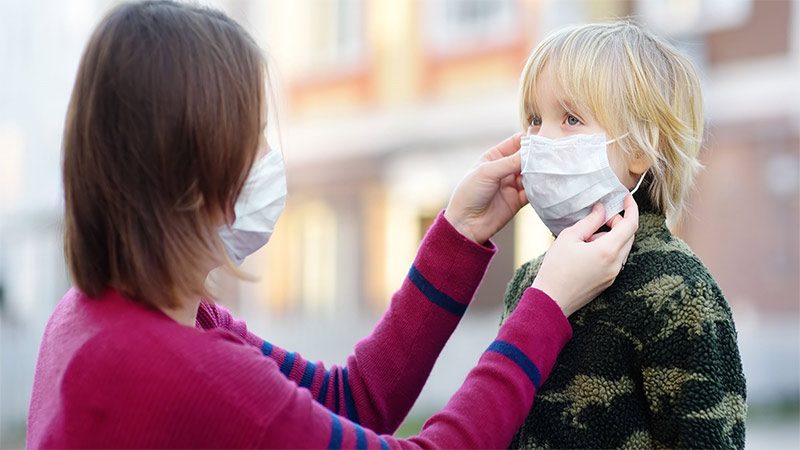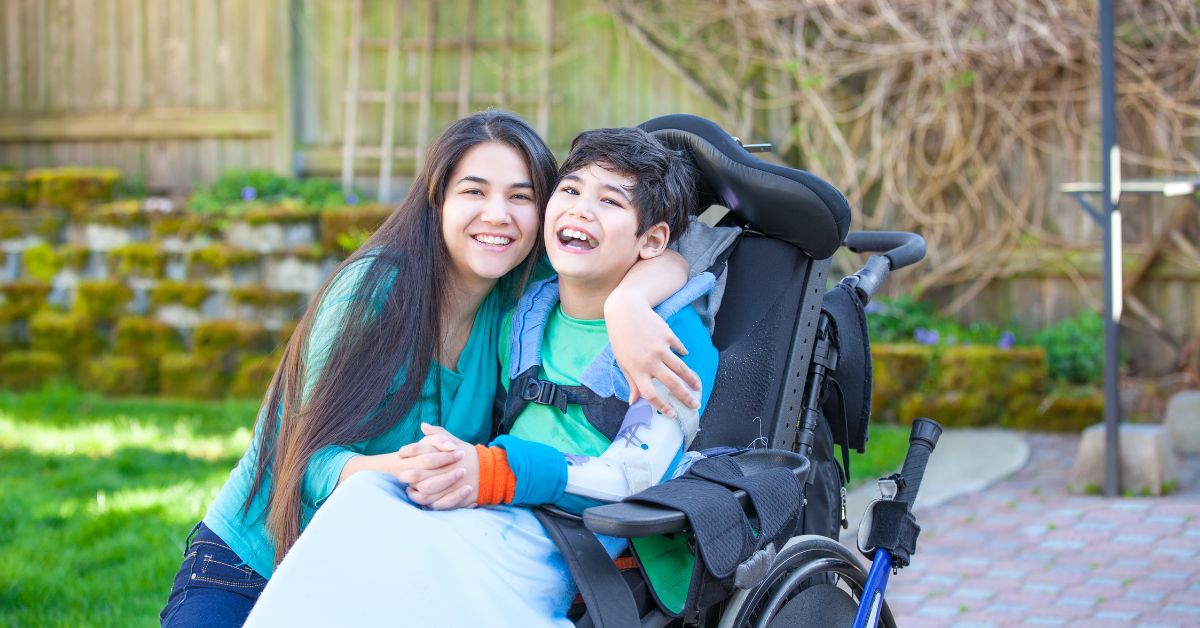The Next Normal – What Parents Need to Know

The coronavirus (COVID-19) pandemic continues to create challenges for families around the world.
This guide offers links to reliable information sources and focuses on issues and items of importance to families raising children in these difficult times. Torchlight will review and update this guide periodically to make sure you have the latest information you need to care for your family and yourself.
Get the facts from reliable sources.
Information about the coronavirus (and associated COVID-19 infection) continues to change daily. Stories about the spread of the virus and the evolving recommendations for social distancing are rampant in the news and on social media. Unfortunately, not all sources of information are providing accurate and timely intelligence and advice. Follow these recommendations when choosing where to get your information:
- Refer to your state government website or local health department for updates on your state’s plans and programs for dealing with the outbreak in your area. You can find your state government website here or here.
- Check the CDC’s website for national and global information and initiatives.
- Visit the website(s) for your child’s school district, daycare, preschool, or university to stay current on information and instructions regarding online learning or assignments, end-of-school-year instructions, information about summer school programs, or potential plans to re-open. Then, check back weekly for updates.
- Be a critical consumer of broadcast news, whether it’s radio, television, or online. Some social media sites and news organizations may be reporting inaccurate information and/or recommending actions other than those set forth by the CDC.
Take recommended precautions.
Current data indicate that older individuals, those with chronic conditions, such as diabetes, severe asthma, heart, lung, or kidney disease, and individuals with compromised immune systems seem to be at higher risk for developing a serious case of COVID-19.
According to the American Academy of Pediatrics (AAP), the pediatric age group may experience milder symptoms of active infection than adults.
Recently, however, health officials have observed a rising number of cases of Multisystem Inflammatory Syndrome in Children (MIS-C) associated with exposure to COVID-19. While MIS-C is rare, parents should take precautions to limit possible exposure to and spreading of the virus. Studies suggest that COVID-19 may be spread by people who are not showing symptoms.
The CDC recommends that you:
- Put distance between yourself and other people outside of your home.
- Cover your mouth and nose with a mask or cloth face cover if/when you must go out in public. Masks and face coverings should not be used for anyone under age 2, anyone who has trouble breathing, or anyone who is unconscious or otherwise unable to remove the mask without assistance.
- Keep a distance of at least 6 feet between you and other people if you are out in public, even if you are you are wearing a mask or cloth face covering.
- Do not gather in groups.
- Stay out of crowded places and avoid mass gatherings.
- Avoid close contact with anyone who is sick or has been exposed to the virus, even inside your home. Maintain at least 6 feet between the person who is sick and other household members, if possible.
- Wash your hands often with soap and warm water for at least 20 seconds, especially after going out of the house into the community. If soap and water are not available, use a hand sanitizer that contains at least 60 percent alcohol.
- Cover coughs and sneezes with a tissue or the inside of your elbow. Throw used tissues in the trash, and wash your hands immediately.
- Avoid touching your eyes, nose, and mouth — key entry points for transmitting viruses.
- If you must use public transportation, try to keep at list 6 feet away from others, whenever possible. Use touchless payment methods. Consider skipping rows between yourself and other riders. Wear a mask. Bring hand sanitizer and tissues with you; then, wash your hands with soap and warm water as soon as possible.
- Clean and disinfect frequently touched objects and surfaces daily (e.g., mobile devices and telephones, door handles, faucets, microwave controls).
- Keep up to date with CDC travel recommendations.
Practicing the following hygiene tips may also be helpful.
- Post a note on bathroom mirrors reminding family members to wash hands with soap and water for at least 20 seconds. Consider also posting notes near doorways or entryways as a reminder to wash hands when coming inside or at the kitchen table as a reminder to wash hands before meals.
- Instruct children to avoid sharing snacks, cups, or utensils with siblings or other family members by saying “No, thank you” or “I’d prefer not to.”
- Leave shoes by the door when entering the home.
Put a childcare plan in place.
The availability of childcare (including daycares, in-person learning, after-school programs, and extra-curricular activities) will likely be impacted by the pandemic for quite some time.
Consider the following as you continue to make arrangements for the 2020-21 school year:
- Talk to your manager and/or employer on a regular basis to create a shared understanding of your caregiving responsibilities and how they are evolving. Many employers have adjusted their policies around attendance, telecommuting, paid time off, and scheduling when and where it is feasible for them to do so. If you have been working from home or flexing your schedule to meet childcare needs, ask your manager if you may continue with this arrangement for the time being. Make sure you stay informed about the actions your employer is recommending, since they will likely evolve along with the pandemic.
- Remain in communication with your child’s care providers. Most childcare centers, schools, and after-school programs are operating quite a bit differently than they have in the past. Some programs are enrolling fewer children due to social distancing requirements. There are likely new safety restrictions in place for staff, children, and parents. Permitted activities for children attending may be limited. And some programs that have reopened may need to close again suddenly if or when an outbreak occurs. Staying in touch with your child’s care providers will help you avoid unnecessary confusion and prepare you for a variety of circumstances.
- Make entertaining activities available. In the event that you find yourself without formal childcare – whether by choice or necessity – keep plenty of activities around to keep your child busy, especially if you are working from home. Consider stocking up on:
- Arts and craft
- Good-fit books
- Board games
- Educational television shows, films, or apps
- Sporting equipment
- Outdoor games and toys
- Avoid using childcare if you can, especially if someone in your home is at high risk of complications due to COVID-19. If this simply isn’t possible for you, check your state’s website for information about emergency child-care centers, which are being made available for medical personnel, critical staff, and other essential workers who are unable to perform their jobs from home.
- If avoiding childcare isn’t possible, and formal care isn’t available, consider forming a “childcare bubble.” This type of arrangement typically involves splitting childcare responsibilities with another family, relative, or loved one. If you must consider this option, it’s a good idea to involve as few people as possible and have each party agree to a set of rules designed to limit the potential for viral exposure. For example, members of the bubble may agree to refrain from socializing outside the bubble and follow recommended safety guidelines.
- Use a care locator to find a sitter. Some states have allowed families to use in-home childcare (such as a babysitter or nanny) when schools and childcare centers are closed. If you decide to pursue this option, consider asking a potential caregiver about what s/he is doing to flatten the curve (such as social distancing practices, etc.).
Be aware that no childcare arrangement with individuals outside your own home is risk-free, even if your child’s caregiver(s) follow the recommended guidelines for social distancing.
Prepare for the continued possibility of quarantine or infection.
Unfortunately, COVID-19 won’t be eliminated from the general population anytime soon. As states work to re-open, it’s important to consider that new stay-at-home orders remain a possibility, especially if infection rates begin to rise.
To prepare for the continued possibility of a quarantine or potential COVID-19 infection in your household, consider taking the following steps:
- Create a list of your child’s medications, pharmacy, physicians, and any special needs in case another parent or family member needs to take over these aspects of childcare if you become ill.
- Determine who will care for your child if you become ill or quarantined. Share all necessary information with the alternate caregiver(s).
- Understand what you’ll need to care for someone in your home with confirmed or suspected COVID-19, or in the event of a self-quarantine. It’s a good idea to have a two-week supply of the following, if available:
- Masks or a washable cloth face covering
- Disposable gloves
- Laundry detergent
- Hand soap
- Trash bags
- Prescription drugs
- Over-the-counter medications
- Groceries (non-perishable is best)
- Infant supplies, such as formula, diapers, wipes, and baby food
- Pet food or other pet supplies
Learn what to do if you or your child gets sick.
Not all cold or flu-like symptoms are related to COVID-19. The primary symptoms of COVID-19 infection are fever, cough, and difficulty breathing/shortness of breath.
The CDC recommends that you stay at home, except to get medical care. If you or your loved one develops these symptoms, call your doctor. The doctor will recommend whether you should remain recovering in isolation at home, need to be seen in the office, or should go to the hospital for care. Many states are encouraging or mandating that insurance companies allow members, during the pandemic, to use their health insurance for telemedicine appointments as they would for in-person visits.
For most people who will experience a mild form of COVID-19, the CDC recommends:
- Staying home. Most people will experience COVID-19 as a mild illness and should remain isolated at home while they are ill.
- Avoiding close contact with others if you are sick. The CDC recommends keeping a personal distance of six feet and staying in well-ventilated areas.
- Avoiding going out in public. Don’t go to work, school, church or other public areas where people gather.
- Avoiding public transit: Avoid public transportation, ride- sharing (such as Uber or Lyft), or taxis, if at all possible.
Recently, health officials have observed a rise in the incidence of Multisystem Inflammatory Syndrome in Children (MIS-C) associated with exposure to COVID-19. MIS-C is a condition in which different body parts – including the heart, lungs, kidneys, brain, skin, eyes, or gastrointestinal organs – become inflamed. MIS-C is a rare, but serious condition.
Contact your child’s health care provider immediately if your child is showing symptoms of MIS-C. Be aware that not all children with MIS-C will exhibit all of these symptoms.
- Fever
- Abdominal pain
- Vomiting
- Diarrhea
- Neck pain
- Rash
- Bloodshot eyes
- Feeling extra tired
Seek emergency care right away, or dial 911 if your child is experiencing:
- Trouble breathing
- Pain or pressure in the chest
- Confusion
- Inability to wake or stay awake
- Bluish lips or face
- Severe abdominal pain
Learn how to care for a child or loved one with COVID-19.
The CDC recommends the following guidelines for caring for an individual with COVID-19:
- Stay in contact with your child or loved one’s doctor to determine if s/he needs professional medical care or when s/he is able to come out of quarantine.
- Consider having the patient rest in a separate room and use a separate bathroom during quarantine, if possible. (Note: This may not always be possible or practical when caring for a younger child or in a smaller home. If the patient must share space with other members of the household, have him or her wear a mask during close contact and clean surfaces regularly).
- Avoid sharing eating utensils, cups, and other personal items
- Wear disposable gloves and a mask while providing care. Remove gloves and mask and dispose of them in a lined trash container. Gloves and masks should be used once and then disposed of; these are typically not designed for multi-use. See instructions for putting on and taking off protective gear.
- After providing care and removing protective gear, wash hands with soap and warm water for at least 20 seconds. Clean and disinfect surfaces that are touched frequently during care.
- Wash the patient’s clothing, towels, wash cloths, bedding, as directed and dry on your clothes dryer’s highest setting.
If you are a mother breastfeeding an infant, it’s important to understand that, to date, there is no evidence that COVID-19 can be spread to your infant via breastmilk, according to the CDC. Most pediatricians recommend continuing to breastfeed during viral infections, since breastmilk provides babies with antibodies that the mother is producing.
Current data indicate that pregnant people might be at increased risk of severe illness from COVID-19. COVID-19 infection may also increase the risk for adverse pregnancy outcomes, such as preterm birth. If you are pregnant, stay informed about the CDC’s guidelines for preventing infection, and discuss potential risks with your care provider. For the most up-to-date information, visit the CDC’s webpage: “Frequently Asked Questions and Answers: Coronavirus Disease 2019 (COVID-19) and Pregnancy.”
Talk to your child about COVID-19.
Concern over COVID-19 may make some children feel anxious, especially if they are returning to daycare or school after months of social distancing. Kids may also worry about Mom, Dad, or other loved ones going to work. Parents and caregivers can help by remaining calm and acknowledging an appropriate level of concern without panicking. Remember that children look to the adults in their lives for reassurance – if you are overly worried, chances are they will be, too!
Consider the following tips on how to address COVID-19 with your child:
- Reassure your child that care providers and health officials are doing all they can to prevent the spread of infection and keep people safe.
- Provide accurate, age- appropriate information about the illness along with instruction on how to reduce the chance of illness (such as handwashing or wearing a mask).
- Let your child ask questions and discuss their concerns openly. Use accurate information to re-frame their concerns, as appropriate.
- Offer extra affection during times of worry.
- Limit television viewing, social media, or news access that may be upsetting to your child. Explain that not everything being said about COVID-19 (at school, online, or in the media) is accurate.
- Promote emotional and physical well-being by sticking to your child’s routine, whenever possible.
- If your child is non-verbal, consider using visual schedules and instructions to teach and promote proper handwashing and other important self-care strategies.
Torchlight does not provide medical advice. It is not a substitute for professional medical advice, diagnosis or treatment. Never ignore professional medical advice because of something you read on Torchlight. If you think you may have a medical emergency, call your doctor or dial 911.
Torchlight does not endorse the organizations or technologies mentioned in this document, but offers their information as a sample of the kinds of materials and services that are available.
Contact Torchlight at support@torchlight.care for more information.



